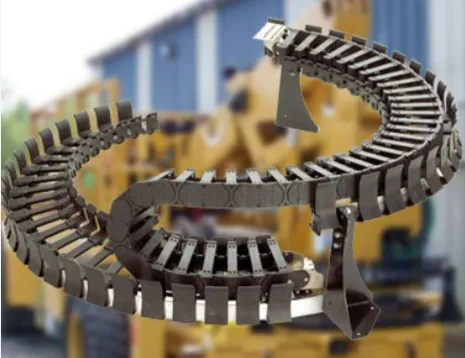synchronous belts and pulleys
Synchronous Belts and Pulleys A Closer Look
Synchronous belts and pulleys are integral components in mechanical systems, especially in applications where precise motion control is crucial. These systems are commonly used in automotive engines, manufacturing machines, and various industrial applications. Understanding the mechanics and advantages of synchronous belts and pulleys can provide insights into their widespread use and significance in engineering design.
What Are Synchronous Belts and Pulleys?
Synchronous belts, also known as timing belts, are looped straps made from durable materials, typically rubber or reinforced composite, that have mechanized teeth on their inner surface. These teeth mesh with corresponding grooves on pulleys, ensuring a positive drive between the belt and the pulleys. This engagement allows for the transmission of torque from one pulley to another with minimal slippage, ensuring that rotational motion is transferred accurately and efficiently.
Pulleys that work with synchronous belts are specifically designed with grooves to accommodate the teeth of the belt. Typically, these pulleys can vary in size and shape, allowing for adjustments in speed and torque, depending on the application’s requirements.
Advantages of Synchronous Belt Systems
1. Precision Timing One of the primary advantages of synchronous belts and pulleys is their ability to maintain precise timing. Unlike traditional V-belts, which may slip under load, synchronous belts ensure that the driven component follows the motion of the driving pulley with exact synchrony. This feature is essential in applications like automotive timing mechanisms, where the synchronization of camshafts and crankshafts is crucial for engine performance.
2. Reduced Maintenance Synchronous belt systems generally require less maintenance than other types of belt drives. They do not need lubrication and suffer less wear because of their design. This low-maintenance aspect can lead to reduced downtime and lower operational costs in industrial settings.
synchronous belts and pulleys

3. High Efficiency The design of synchronous belts minimizes energy loss due to slippage, enabling highly efficient power transmission. This efficiency is particularly beneficial in applications that require high torque and speed, enhancing the overall operational performance of machinery.
4. Versatility Synchronous belts and pulleys are versatile and can be used across various applications, from consumer products like sewing machines and exercise equipment to complex industrial machinery. Their adaptability to different environments and loads makes them a popular choice in engineering.
5. Noise Reduction Synchronous belt systems tend to operate more quietly than chains or gear drives, which is a significant advantage in applications where noise reduction is essential. This characteristic is particularly valued in consumer products and equipment used in residential areas.
Applications of Synchronous Belts and Pulleys
The applications for synchronous belts and pulleys are vast. In the automotive sector, they are commonly used for timing belts that synchronize engine components. In manufacturing and automation, they drive conveyors, robotics, and CNC machines. Additionally, they are found in various appliances and equipment, highlighting their relevance in everyday life.
Conclusion
Synchronous belts and pulleys represent a remarkable engineering solution for precision motion control. Their advantages, including reduced maintenance needs, high efficiency, and operational quietness, make them an indispensable choice in numerous applications. As technology advances, the design and materials used for these systems continue to improve, promising enhanced performance and durability in the future. Whether in automotive engines or industrial machinery, the importance of synchronous belts and pulleys in modern engineering cannot be overstated.








